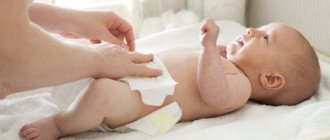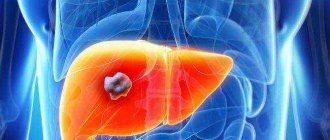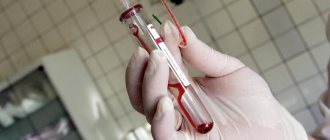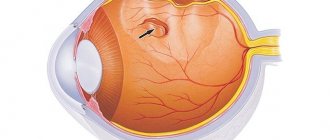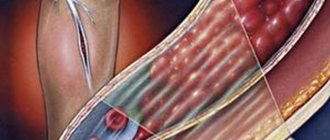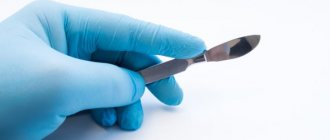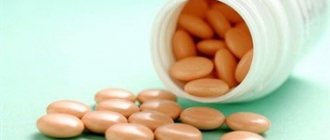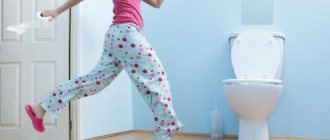Foamy stool while breastfeeding: causes
Almost all parents of breastfed babies face this problem. If it appears rarely, unsystematically, from time to time, and the child feels well, has a great appetite, and is not capricious, there is no need to see a doctor. This sometimes happens and may be affected by changes in the mother's diet. Typically, foamy stools in infants who are fed mother's milk may occur for the following reasons.
Foamy stool while breastfeeding, reasons:
- Drinking large amounts of foremilk. This is a liquid substance that is mainly saturated with water, but contains small amounts of enzymes and lactase.
- Accordingly, the child eats only fore milk, may not be full, he lacks nutrients, as well as lactase, which is mainly found in hind milk. Therefore, in no case should you give your baby a second breast if he has not finished the first.
- You should not alternate breasts and give them at one feeding. Let the baby empty one breast at one feeding, and the other at the second. This will allow you to consume not only fore milk, but also hind milk, which is fattier and rich in enzymes.
I have a stomachache
First aid
During this period, it is extremely important for a child’s body to replenish lost fluid, so save the baby from dehydration with water. To do this, you can use special solutions with electrolytes, which are aimed at restoring the water-salt balance. For children fed on mother's milk, continued lactation is extremely important.
Remedies to help cope with the problem:
- Regidron or Gastrolit. These medications will help with dehydration. You can buy them at any pharmacy, and they are diluted very simply - with water (in the proportions specified in the instructions). The cooled liquid should be drunk in small sips.
- Smectite. A drug used for diarrhea, which copes with the task of removing harmful toxins, microbes and other negative substances from the baby’s body. Smectite restores intestinal microflora and is pleasant to the taste. Infants are given the product in the following concentration: dissolve ½ sachet in 1 glass of water. The baby should drink this volume several times.
- Enterol. This remedy is an indispensable assistant for dysbiosis and various infectious intestinal diseases. Just 4 days of use, and you will notice that your baby’s stool does not foam, and his intestines will be free of fungal and microbial microorganisms. Release form for children - capsules. Dissolve the contents of the capsule in milk and give the little one something to drink. You should not take the drug for more than 5 days.
- Hilak Forte (we recommend reading: instructions for “Hilak Forte” for newborns). The presence of foamy stool in most cases implies taking this drug. It restores microflora and is responsible for improving the functioning of the digestive system. The drops are easy to use. The child only needs to give a couple of drops after feeding.
Hilak Forte will quickly improve the functioning of the digestive system and relieve indigestion
- Linux. When the intestines are weakened by a large content of bacteria, Linex will come to the rescue (we recommend reading: instructions for using Linex baby powder). The capsule should be opened and the powder poured into water or milk.
- Lactase Baby (we recommend reading: instructions for the drug “Lactase Baby”). An enzyme-based drug helps to better absorb dairy products. For babies up to one year old, this product is added to expressed milk. After a few minutes, you can begin treatment. Children after 1 year of age can dissolve the contents of the capsule in water with a small amount of milk.
Why does a child have foamy stools after introducing complementary foods?
The fact is that in most cases, no one diagnoses children under six months with dysbacteriosis. Initially, the baby’s intestinal cavity is sanitized; there are no bacteria in it at all.
Why does a child have foamy stools after introducing complementary foods:
- It is for these purposes that the baby is immediately placed on the mother’s breast after birth. Together with a portion of colostrum, and also when licking the areola, he receives the first portion of bacteria that populate his intestines and multiply there.
- It happens that these bacteria multiply very slowly in the stomach, which can cause digestive problems. Usually such children are not fed with medications, but on the contrary, the front milk is expressed and only the hind milk is given. This is done to quickly saturate the child’s intestines with beneficial microorganisms, as well as lactase.
- Early introduction of complementary foods. It is not recommended to give complementary foods to children under 6 months of age who are breastfed. All the necessary substances, fats, proteins, carbohydrates are found in mother's milk. No amount of purees or vegetable soups will make up for the deficiency.
- Therefore, if such a reaction is observed, abandon the idea of introducing complementary foods. Most often, mothers want to immediately switch their child to adult food after 6 months, so they introduce new products to the menu almost every day.
- You can't do that. Typically, a new product is introduced at a rate of one per week. Moreover, this is done exclusively in small portions in order to track the reaction of the baby’s intestines to such innovations. Stick to the schedule for introducing complementary foods, and be sure to consult with your pediatrician.
Baby
What can newborn feces tell you?
In the very first days after birth, the baby’s stool is called “meconium” - sterile feces of a greenish-black hue without the slightest odor.
The original stool ceases to be sterile when bacteria appear in the newborn's intestines, which occurs on the second or third day of his life. From this moment on, the feces change.
Now the ideal bowel movements of a breastfed baby should look like this:
- with a small amount of mucus;
- puree consistency;
- with small lumps of a yellowish or whitish tint;
- stool shade – yellow, greenish or reddish;
- the smell of feces is similar to the smell of slightly sour milk.
Feeding on mother's milk, the baby empties its intestines three to four times a day in fairly large portions. This can happen immediately after the child has eaten.
Some babies can defecate up to twelve times a day, and there are those who only have bowel movements once a week. If the child eats well, then both options are not a deviation from the norm.
When the baby is two or three months old, he defecates no more than five to seven times a day. The consistency of the stool is soft and looks like a slightly liquid porridge.
My baby has foamy stools for a month, what should I do?
A woman who is breastfeeding must adhere to an appropriate diet. Remove red vegetables and fruits, whole, fat cow's milk, yeast from the menu, minimize the intake of gluten, as well as products made from white flour.
A month old baby has foamy stools, what to do:
- These ingredients may cause foamy stools. This happens especially often after eating buns or pies. Yeast enters the child's body along with mother's milk and begins to multiply inside the stomach.
- Foamy stool in a baby indicates that fermentation processes are occurring in his intestines, with the release of a gas bubble. It is necessary to find which bacteria or microorganisms, possibly products, could cause such a pathology.
- This happens often in infants under the age of 6 months, especially if they suffer from colic and tummy pain. In this case, massage the tummy more often, apply a warm diaper to it, and also give products that remove excess gases from the child’s body. You can learn about these drugs here.
Baby
Pediatrician consultation
Parents need to consult a pediatrician about any changes in the baby’s body. If the child is active and does not show anxiety, and the symptoms are limited only to foam in the baby’s stool, going to the clinic can be postponed. But in some cases you still can’t hesitate.
The following signs represent danger:
- Changes in the color of the stool (for example, the stool may be green);
- Increase in temperature;
- The presence of blood or mucus in the poop;
- Lack of appetite;
- Feces have a strong, unpleasant odor;
- Sleep disorders;
- Drowsiness and lethargy;
- The baby constantly burps more than a tablespoon/time;
- The child screams and sharply bends his legs towards his tummy.
If one or more of these symptoms is present, it is better to immediately show the baby to a good specialist . As a rule, timely treatment determines the quality and duration of further therapy.
When is foamy stool in a child considered a pathology?
There are several signs that indicate that you need to see a doctor. Foamy stools are not always a normal option; more often than not, they indicate the opposite.
When foamy stool in a child is considered a pathology:
- If you have foamy stools for several days in a row
- If a child feels unwell with such a chair, is capricious, draws his legs to his stomach
- If the child has a fever or vomiting
- If the stool is green and contains mucus, this indicates a possible infection.
This usually happens if complementary foods are introduced, or the mother did not wash her hands or breasts before feeding. Pathogenic microorganisms often remain on the hands, which may not cause harm to an adult, but will become dangerous to a baby. Foamy stools often indicate a viral or bacterial infection in the gastrointestinal tract. It is along with foamy stools that an increase in temperature, diarrhea with green spots and mucus are often observed.
Feeding
Mucus and foam appeared in the baby's stool
This phenomenon overwhelmingly indicates dysbacteriosis. Green stool with mucus and foam may be accompanied by colic and skin rashes. Accordingly, the baby becomes restless, eats and sleeps poorly.
Mucus can also appear when the baby is bottle-fed and formula milk is not suitable for him. It’s worth changing the last one and observing the baby’s reaction.
Another possible reason is iron, which is contained in a number of mixtures.
Foamy stool in a 5 year old child: causes
Foamy stools occur not only in infants, but also in children who go to kindergarten. Indeed, the period from 2 to 6 years is one of the most critical, since it is at this time that a child can begin to get very sick.
Foamy stool in a 5 year old child, what to do:
- This is due to the fact that in the garden the child encounters a large number of new bacteria, which are not always friendly to the body. Children who are just starting kindergarten may often suffer from colds, as well as gastrointestinal disorders.
- If at this time the child begins to have loose, foamy stools, this indicates an infection process. Most likely, the child ate poor quality food. Watch the baby.
- If, along with this, the stool is loose, watery, with an unpleasant putrid odor or sour, this is a reason to consult a doctor. Very often adenoviruses manifest themselves this way. The child may have enterocolitis, or serious poisoning.
- Often, after such a stool, the temperature may rise to critical levels. Therefore, do not delay under any circumstances; be sure to consult a doctor.
Baby is sleeping
Dysbacteriosis
Dysbacteriosis is a disruption of the gastrointestinal tract.
This condition can manifest itself in different ways. Of course, stool changes come first. It liquefies, becomes watery, and becomes foamy.
Read: Stool analysis for Helicobacter pylori: features of the study
Sometimes, on the contrary, the stool becomes too hard, causing constipation. Alternating constipation and diarrhea is also considered a common sign of dysbiosis.
To normalize the condition, children should receive only breast milk. Artificial drinkers are recommended to introduce fermented milk mixture and acidophilus drinks. Older children get rid of this disease after following a diet. which is based on the use of cereals, fermented milk, and vegetables.
Be sure to use probiotics prescribed by your doctor. Some of these products are allowed to be used literally from birth. Self-medication in this situation is not appropriate; only a specialist can assess the situation adequately and select the optimal treatment regimen. The total duration of treatment is one to two months.
Foamy stool: treatment
When treated with antibiotics, the drugs Lactiale or Lactovit are prescribed. For bacterial ailments that are associated with infection with staphylococcus or other bacteria, antibiotics are prescribed, which are also combined with drugs containing lacto and bifidobacteria. Sometimes Bifidumbacterin is prescribed along with them.
Foamy stools, treatment:
- If foamy stool is observed in an infant due to an insufficient amount of enzymes and beneficial microorganisms that help digest food, Bio-Gaia drops are prescribed. These are bifidobacteria that help improve the functioning of the stomach and populate it with beneficial microorganisms. They can also prescribe Bifidumbacterin, Laktiale, Linex.
- Such drugs are prescribed even to infants. If foamy stools are caused by complementary foods, the introduction of new foods is postponed for some time. Nothing bad will happen if you introduce a new product not in a week, but in two. A child's reaction may be unpredictable to a particular product. Indigestion is often caused by potatoes.
- It contains a lot of starch and, in general, is quite heavy for a child’s body. Foamy stools are a reaction to apricot and pear puree. These are healthy fruits, but they can also put a serious strain on your baby's stomach. Under no circumstances should you give adult foods from your table when introducing complementary foods. The child's stomach is not ready to digest such food.
Baby
Food allergies
Food allergies occur when new foods are introduced into complementary foods.
An allergic reaction may appear as foamy stools. The most common provocateurs of allergic reactions in infancy are:
- For products received by the mother (citrus fruits, berries, nuts).
- For newly introduced mixtures.
- On medications, especially when using antibacterial drugs.
- For certain types of complementary foods or when they are introduced too early.
As soon as allergens can be identified and eliminated, the stool will become normal.
Temperature and foamy stools in a child - what to do?
If foamy stool is accompanied by vomiting, diarrhea, and the child has a fever, malaise, or weakness, then be sure to show it to a doctor and do not self-medicate.
Temperature and foamy stools in a child, what to do:
- In each specific case, after receiving the test results, the doctor will prescribe the necessary treatment.
- Under no circumstances should antibiotics be given for such a symptom. They may not only not help, but will make the situation even worse.
- Give the child water. If he vomits, give it with a syringe or spoon.
Abdominal pain
Treatment of foamy stools depends on the cause that triggered its occurrence. If it is viral enterocolitis, then antiviral drugs such as Groprinosin are prescribed.
How to treat?
The following recommendations are also useful:
- you need to adhere to a certain diet and breastfeed your baby correctly;
- we must not forget about the rules of caring for a baby;
- stop self-medicating! Even traditional methods are immediately discussed with a doctor;
- The doctor cannot cause fear, so any alarming sign should be discussed with him.
If the newborn's bowel movements have changed, you need to make an appointment with a pediatric specialist and undergo all the necessary tests. Whatever the reason for the occurrence of foamy stool in a baby, the task of parents is to be attentive and monitor any changes in the child’s well-being.



